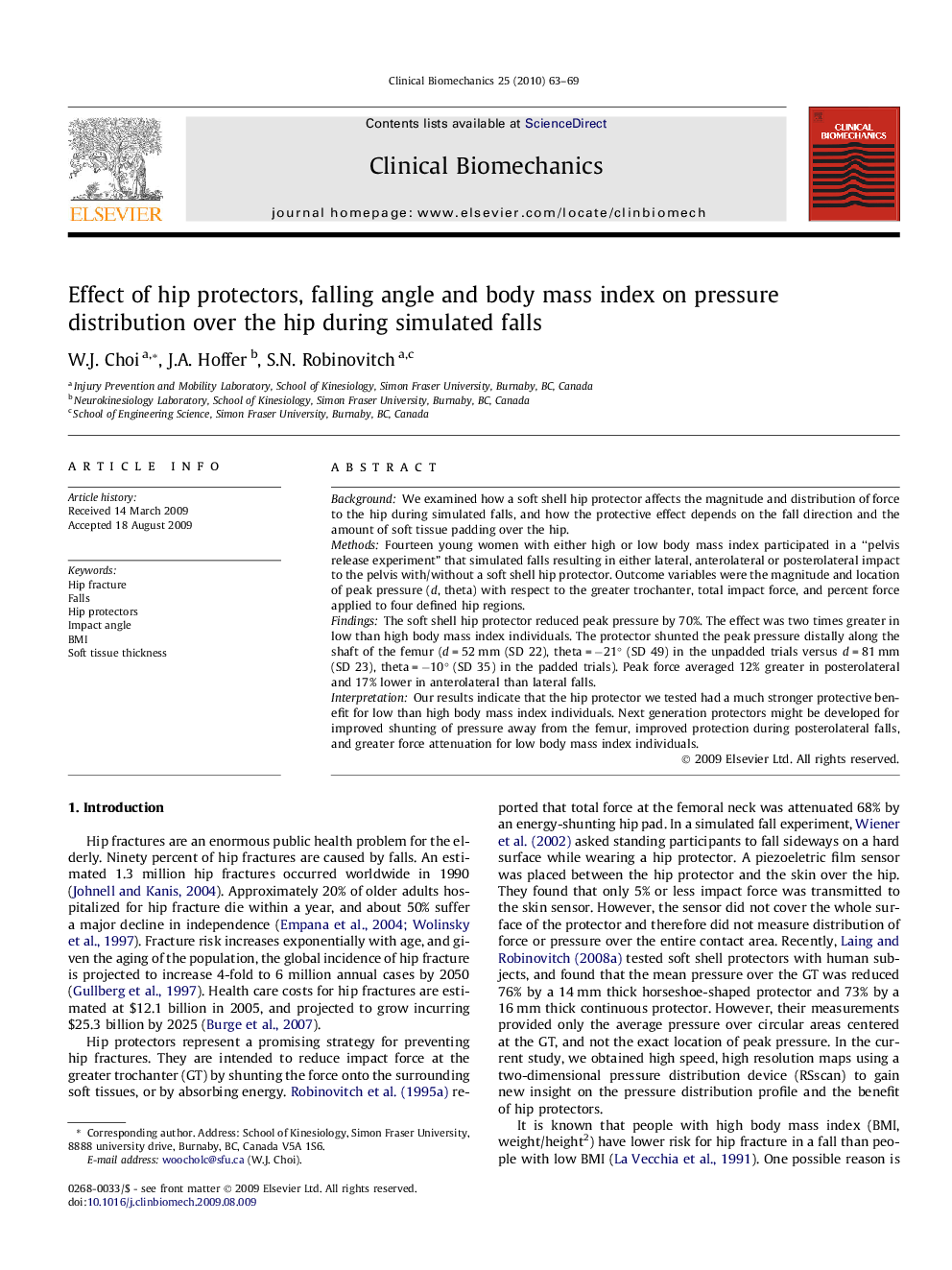| Article ID | Journal | Published Year | Pages | File Type |
|---|---|---|---|---|
| 4051151 | Clinical Biomechanics | 2010 | 7 Pages |
BackgroundWe examined how a soft shell hip protector affects the magnitude and distribution of force to the hip during simulated falls, and how the protective effect depends on the fall direction and the amount of soft tissue padding over the hip.MethodsFourteen young women with either high or low body mass index participated in a “pelvis release experiment” that simulated falls resulting in either lateral, anterolateral or posterolateral impact to the pelvis with/without a soft shell hip protector. Outcome variables were the magnitude and location of peak pressure (d, theta) with respect to the greater trochanter, total impact force, and percent force applied to four defined hip regions.FindingsThe soft shell hip protector reduced peak pressure by 70%. The effect was two times greater in low than high body mass index individuals. The protector shunted the peak pressure distally along the shaft of the femur (d = 52 mm (SD 22), theta = −21° (SD 49) in the unpadded trials versus d = 81 mm (SD 23), theta = −10° (SD 35) in the padded trials). Peak force averaged 12% greater in posterolateral and 17% lower in anterolateral than lateral falls.InterpretationOur results indicate that the hip protector we tested had a much stronger protective benefit for low than high body mass index individuals. Next generation protectors might be developed for improved shunting of pressure away from the femur, improved protection during posterolateral falls, and greater force attenuation for low body mass index individuals.
